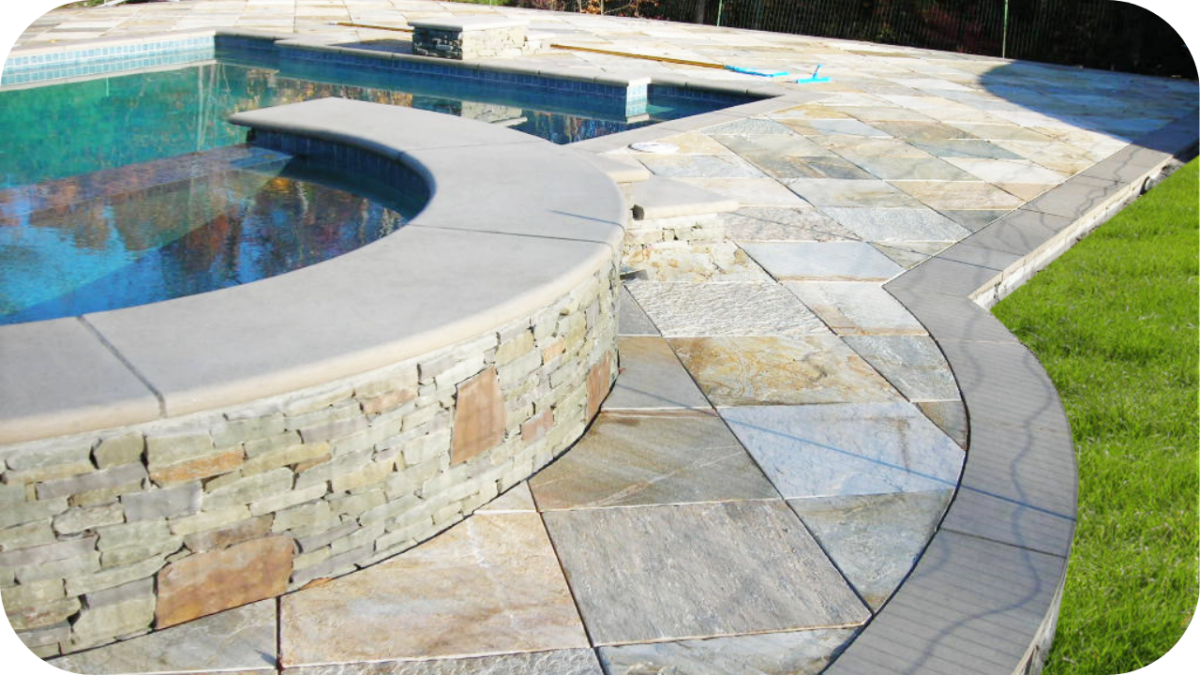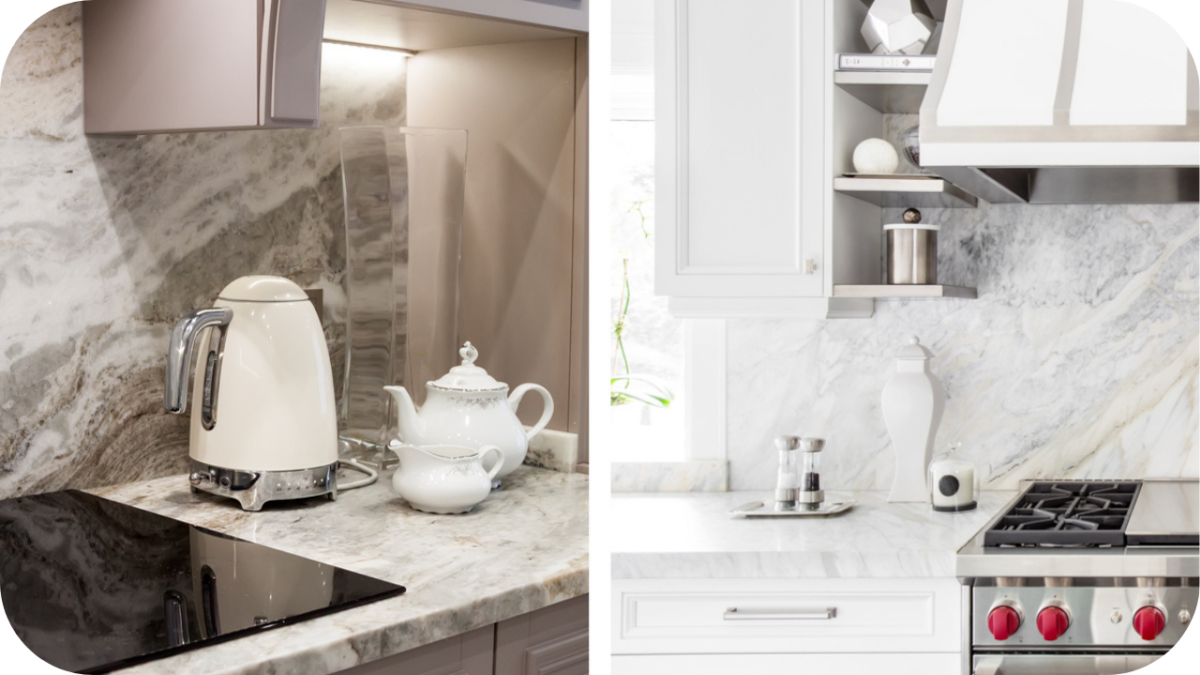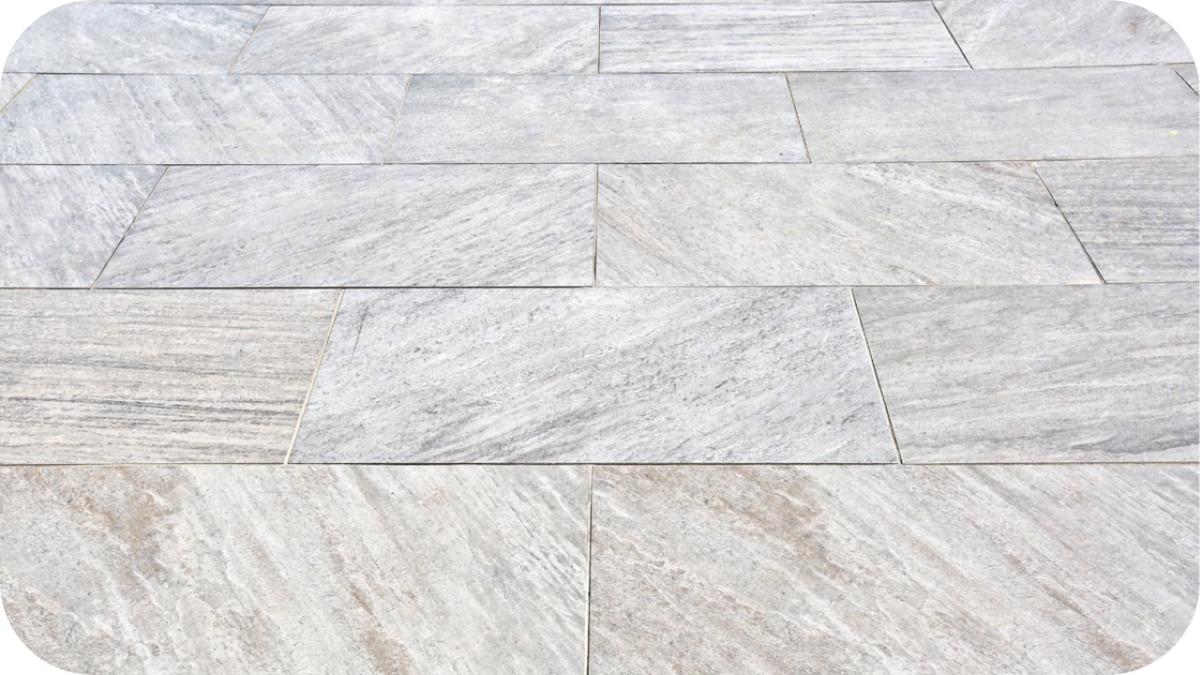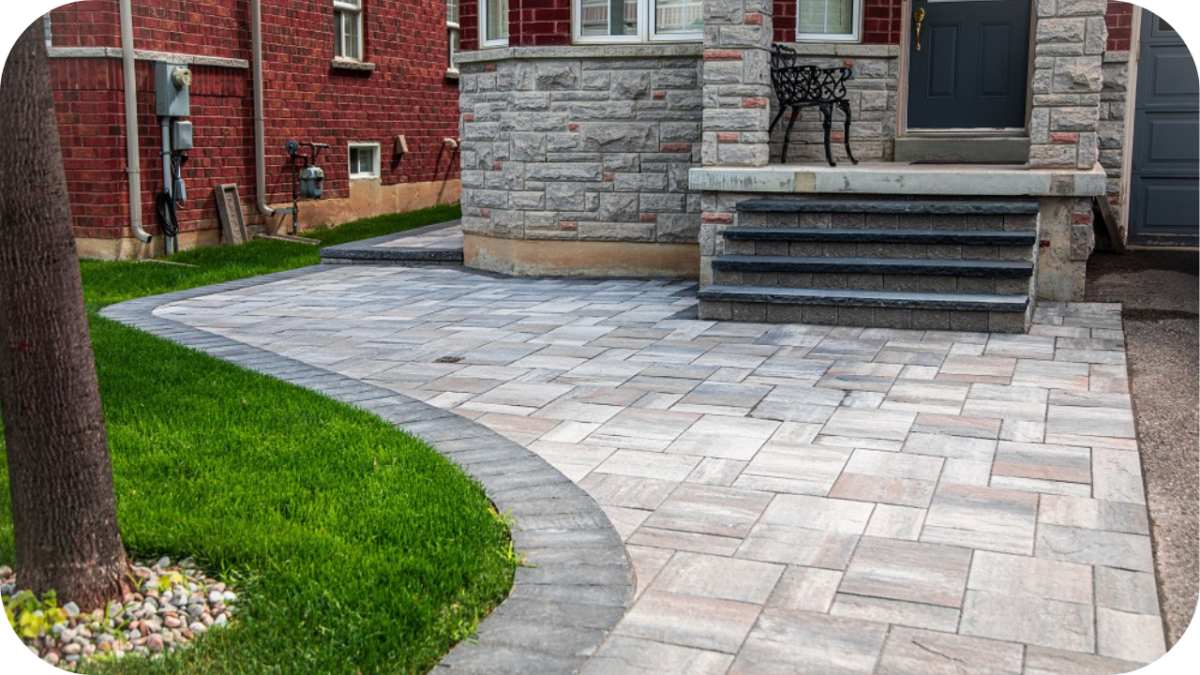Is Quartzite the Best Choice for Pool Coping
Choosing the right coping material for your pool is about more than just style: it is about performance, safety, and long-term durability.
Coping protects the pool structure, provides a comfortable edge for swimmers, and ties together the overall landscape design. Selecting poorly can lead to future maintenance issues and safety concerns.
One material gaining popularity for premium outdoor projects is quartzite. Known for its impressive strength, cooling properties, and natural beauty, quartzite is becoming a top choice for luxurious, long-lasting pool surrounds.
Is Quartzite the Best Choice for Pool Coping?
Yes, quartzite is an outstanding choice for pool coping due to its durability, slip resistance, and coolness underfoot. It withstands saltwater, chlorine, and weather exposure, offering minimal maintenance needs. Quartzite combines long-lasting performance with elegant, natural beauty, making it ideal for both residential and commercial pool projects.
Why Quartzite Is a Strong Candidate for Pool Coping

Choosing pool coping is about more than surface looks. Here is why quartzite continues to outperform many other materials in demanding outdoor environments.
1. Offers Superior Durability
Quartzite stands up to wear, weather, and physical impact with ease. It handles exposure to chlorine, saltwater, and extreme outdoor conditions without weakening, cracking, or losing its structural integrity over time.
2. Provides Natural Slip Resistance
The naturally textured surface of quartzite provides excellent grip, even when wet. This feature makes it a safer option for pool surrounds, helping to reduce slip risks in busy or family-focused areas.
3. Maintains Coolness Underfoot
Quartzite remains cool underfoot even on the hottest summer days. Its heat-resistant qualities create a comfortable poolside environment, ideal for barefoot use and relaxing outdoor living in sunny climates.
4. Delivers Outstanding Aesthetic Appeal
Quartzite’s elegant veining, rich colour variations, and natural beauty enhance any outdoor design. It pairs effortlessly with both contemporary and rustic aesthetics, elevating the visual impact of your entire pool area.
5. Requires Low Maintenance
Quartzite requires only simple upkeep to stay beautiful. Regular cleaning with water and mild detergent keeps it looking fresh, while its dense surface makes it less prone to staining or etching.
6. Resists Chemical Damage from Pools
Quartzite’s dense composition makes it resistant to damage from chlorine and saltwater exposure. This ensures the stone remains structurally sound and attractive around pools, even with constant chemical treatments over time.
Quartzite vs Other Pool Coping Materials

Choosing the right material for pool coping can impact not just the look but also safety, maintenance, and durability. Here is how quartzite compares side by side.
| Feature | Quartzite | Travertine | Bluestone | Concrete |
| Porosity | Low porosity, highly resistant to moisture and chemicals | High porosity, requires sealing | Moderate porosity, needs sealing | Varies, often needs sealing to prevent water absorption |
| Slip Resistance | Naturally textured for excellent grip even when wet | Good slip resistance but depends on finish | Can be slippery when wet without textured finish | Textured options available but can wear smooth over time |
| Heat Retention | Stays cool underfoot in direct sun | Stays cool, very comfortable barefoot | Absorbs more heat, can become very hot | Absorbs heat quickly, can be hot underfoot |
| Durability | Extremely durable, withstands saltwater, chlorine, and UV exposure | Durable but softer, more vulnerable to acidic spills | Strong and durable, susceptible to weathering over time | Less durable, prone to cracking and weathering |
| Maintenance Requirements | Low maintenance, occasional cleaning and optional sealing | Needs regular sealing to protect from stains and weather | Needs sealing and more maintenance to preserve appearance | Requires frequent maintenance and resealing |
| Visual Appeal | Elegant natural veining and colour variation | Earthy tones, warm and classic look | Uniform blue-grey tones, traditional look | Plain appearance unless stained or textured creatively |
| Longevity | Extremely long-lasting, ideal for premium outdoor projects | Good longevity with proper care | Long lifespan but can fade and weather without maintenance | Shorter lifespan, needs regular repairs |
| Cost | Higher initial investment, better long-term value | Moderate cost, higher with sealing and maintenance | High cost for premium grades | Lower upfront cost but higher maintenance expenses |
Design Tips for Using Quartzite Around Pools

Quartzite’s versatility offers endless design opportunities for stunning pool copings. Here are some essential design tips to make the most of this beautiful, durable stone.
1. Choose the Right Finish for Practicality and Style
Selecting a natural split, honed, or brushed finish enhances slip resistance and visual appeal. Textured finishes work best around pools where safety, comfort, and elegant appearance are equally important.
2. Coordinate Quartzite with Pool Tiles and Surrounding Paving
Ensure your quartzite complements the colours and materials of your pool tiles, paving, and landscape elements. A unified palette creates a seamless, harmonious outdoor space that feels natural and welcoming.
3. Select Light Colours to Reflect Heat
Lighter quartzite tones like cream, silver, or soft grey help reflect sunlight, keeping the surface cooler underfoot. Light colours also create a bright, airy poolside atmosphere that feels fresh and inviting.
4. Incorporate Custom Edge Profiles for a Polished Look
Consider bullnose, drop-face, or pencil-edge profiles for quartzite coping. Customised edging softens pool edges, improves safety, and enhances the overall refinement of your outdoor entertaining and swimming areas.
5. Use Large Formats for a Modern, Minimalist Feel
Opting for larger quartzite slabs around the pool creates a sleek, contemporary look. Minimal grout lines offer a clean, expansive feel that highlights the stone’s natural beauty without visual clutter.
6. Blend Quartzite with Natural Surroundings
Pair quartzite with timber decking, stone retaining walls, or lush gardens. Integrating natural textures around the pool creates a cohesive, organic space that feels connected to the surrounding landscape.
7. Plan Effective Drainage to Protect Stone Integrity
Ensure adequate drainage around the pool to prevent water pooling on quartzite surfaces. Good drainage not only maintains appearance but also extends the stone’s lifespan by avoiding moisture-related damage.
Maintenance Tips for Quartzite Pool Coping

Quartzite coping is naturally tough, but a few smart maintenance practices will keep it looking flawless and performing beautifully for decades to come. Here is what you need to know.
- Clean regularly with mild detergent and water: Use a soft mop or cloth with a pH-neutral cleaner. Avoid acidic or abrasive products that can erode the stone’s surface and dull its natural beauty over time.
- Seal the surface periodically for enhanced protection: While quartzite is dense, sealing helps shield it against salt, chlorine, and staining. Reseal every two to three years or as recommended for your specific pool environment.
- Prevent mould and surface discolouration: Quickly clean away standing water, leaf debris, or spills to prevent mould, mildew, and water stains. Quartzite’s low porosity helps, but prevention keeps surfaces pristine longer.
- Use soft brushes or non-abrasive tools: When scrubbing quartzite surfaces, always use soft-bristled brushes or microfiber cloths. Avoid harsh scrubbing pads or steel brushes that could scratch or damage the surface sealant.
- Inspect coping edges and joints annually: Look for any loosened edges, cracked grout, or early signs of shifting. Addressing minor issues promptly protects the integrity of your coping and prevents more costly repairs later.
Conclusion
Quartzite stands out as a superior choice for pool coping, offering unmatched durability, slip resistance, heat tolerance, and refined beauty. Its low maintenance needs and long-lasting performance make it ideal for residential and commercial projects alike.
If you are looking to elevate your pool surrounds with premium materials, speak to the experts at Splendour in Stone. We will help you choose the perfect quartzite solution to create a safe, stylish, and timeless outdoor space.








